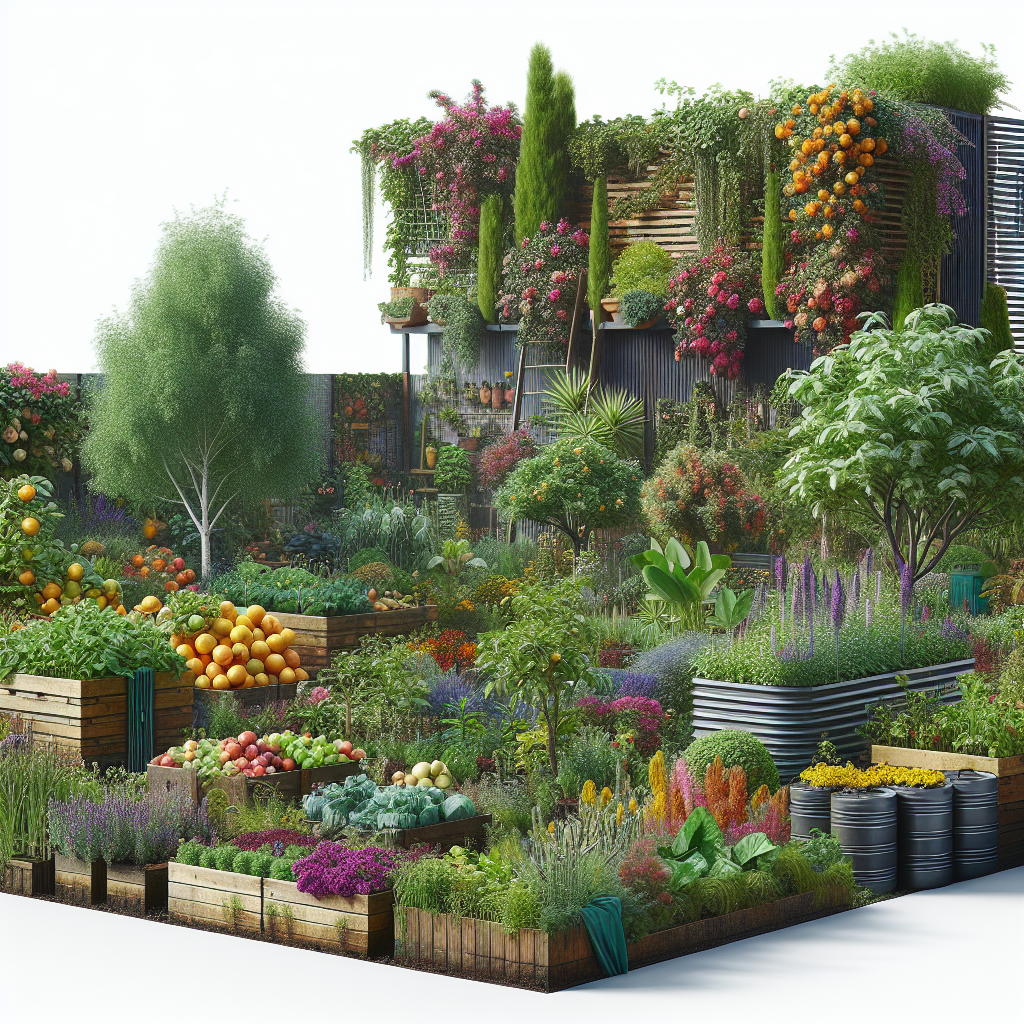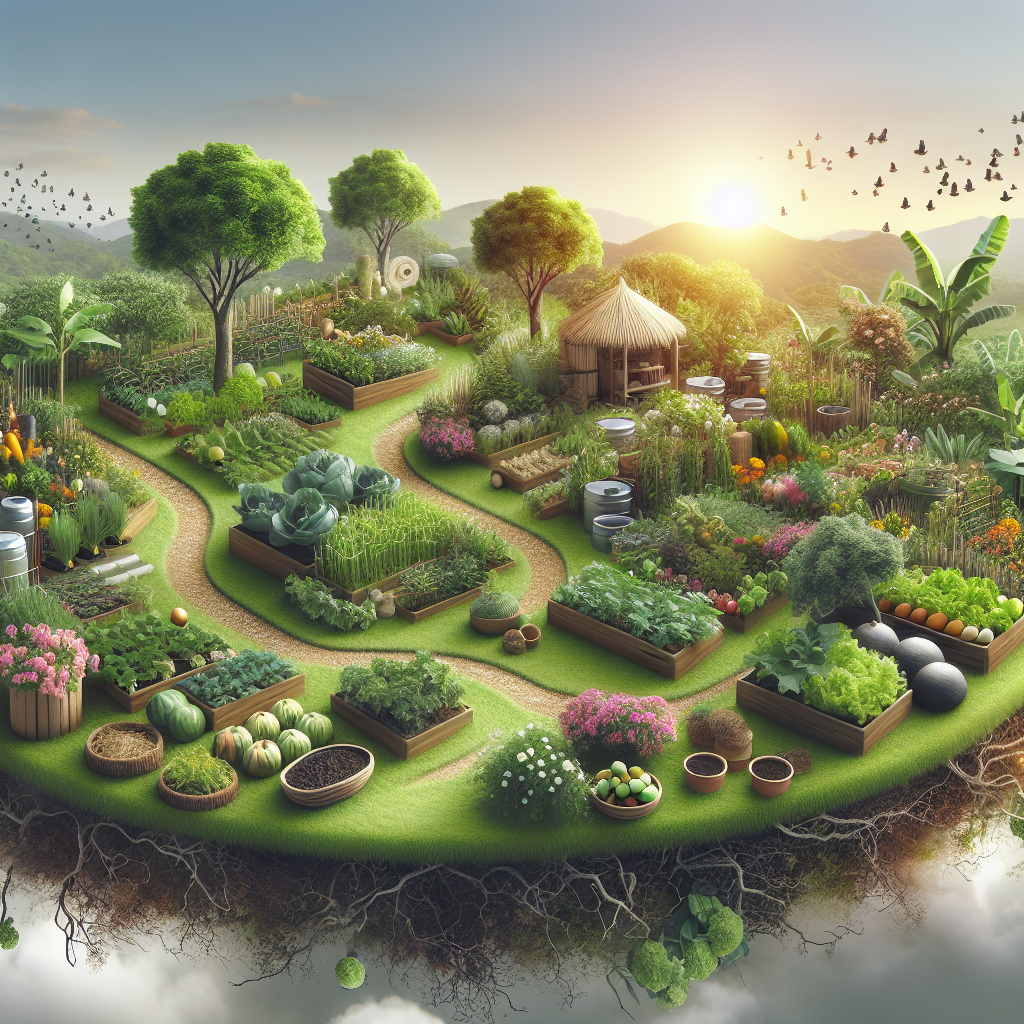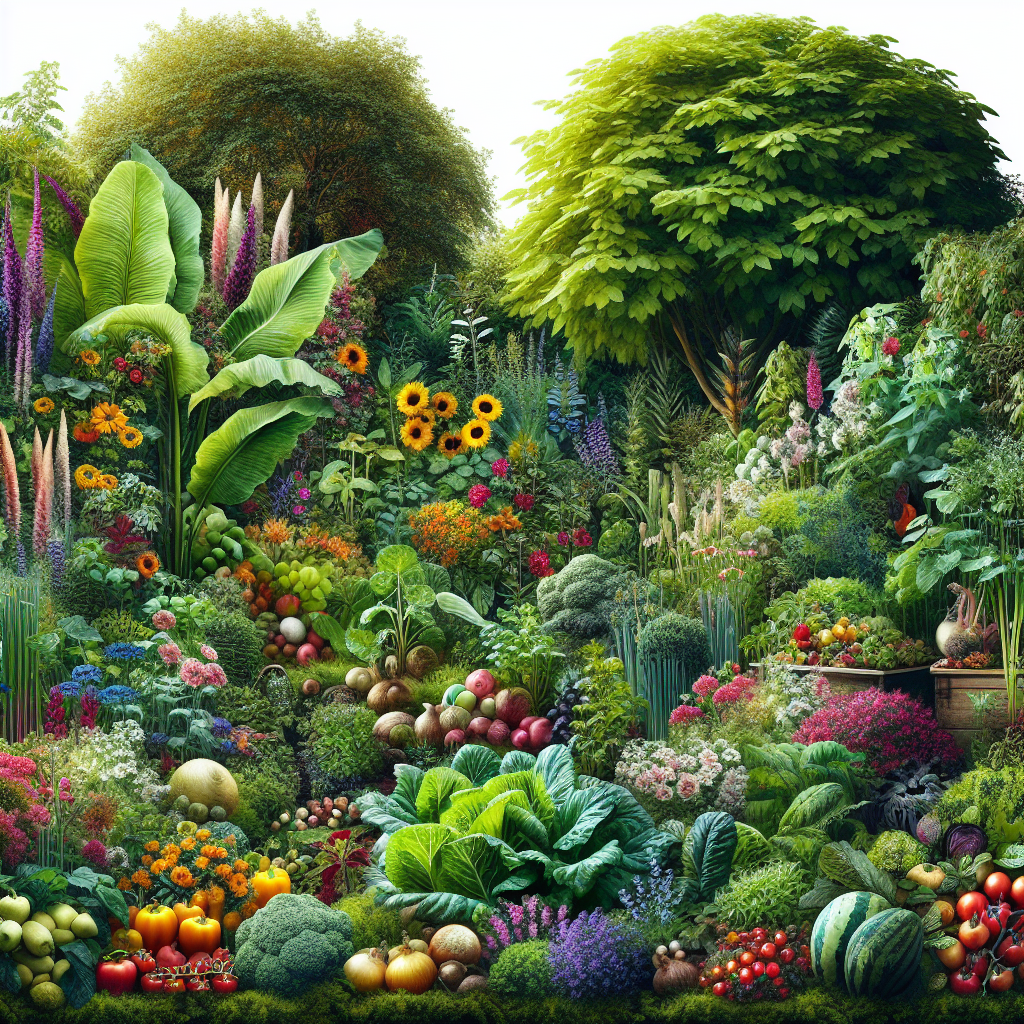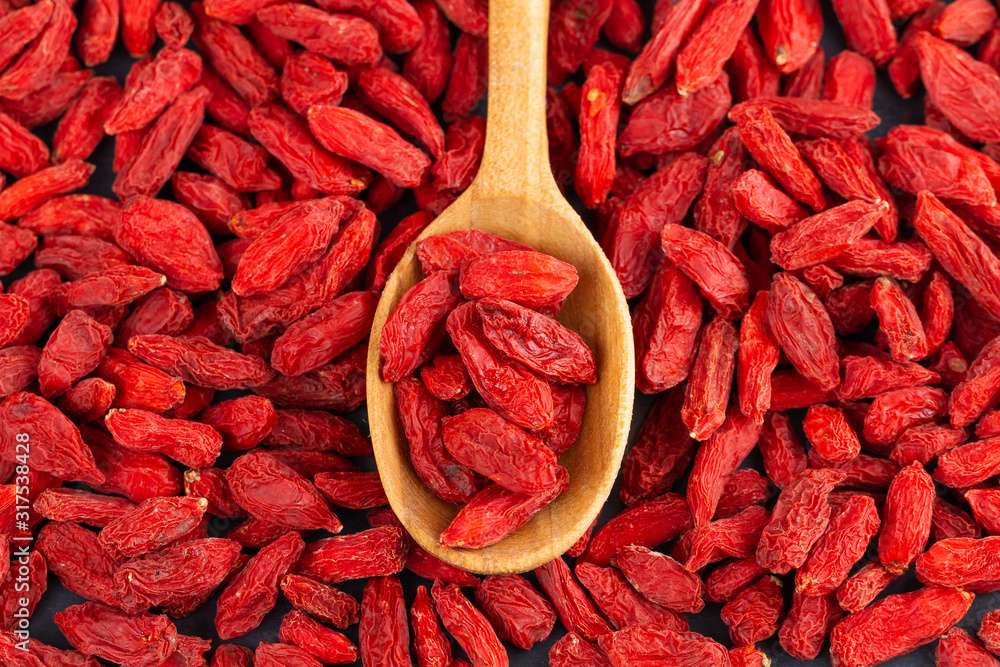Welcome to the world of permaculture techniques, where sustainable and productive gardening meets eco-friendly living. Whether you’re a seasoned gardener or just starting your journey, permaculture offers a holistic approach to working with nature rather than against it. This philosophy isn’t just about planting; it’s a comprehensive system that integrates land, resources, people, and the environment through mutually beneficial synergies.
One of the key principles of permaculture is to mimic natural ecosystems. By observing and replicating the patterns and relationships found in nature, you can create a self-sustaining garden that requires less maintenance and inputs over time. Techniques like companion planting, soil building, and water management are essential components that work together to create a thriving ecosystem.
As we delve into the various techniques in this article, you’ll discover how to transform your garden into a productive, resilient, and sustainable space. From building healthy soil to managing water efficiently, each method plays a crucial role in the overall success of your permaculture garden.
Visit our website to learn more and get started today! Click here.
Designing a Permaculture Garden

Designing a permaculture garden is a thoughtful and intentional process that begins with understanding your site’s unique characteristics. Start by observing the land, noting factors such as sunlight, wind patterns, soil type, and existing vegetation. This initial observation phase, often referred to as site analysis, is crucial for creating a design that works harmoniously with nature.
Next, consider the concept of zoning in your design. Permaculture zones help you organize your garden based on how often different areas need to be accessed. For instance, Zone 1, closest to your home, should include high-maintenance plants like herbs and vegetables that you use frequently. As you move further out, zones can include less frequently accessed areas, such as orchards (Zone 2) and woodlands or natural habitats (Zone 5).
Another key element in permaculture design is creating guilds. A guild is a group of plants that work together to support each other’s growth. For example, a fruit tree guild might include nitrogen-fixing plants, ground cover, and pollinator-attracting flowers. These plants create a mini-ecosystem that reduces the need for external inputs like fertilizers and pesticides.
Water management is also paramount in permaculture design. Techniques such as swales, rain gardens, and ponds help capture and store water in the landscape, reducing the need for irrigation and creating habitats for beneficial wildlife. By thoughtfully designing your permaculture garden, you can create a productive and sustainable space that thrives with minimal intervention.
Building Healthy Soil Naturally
Building healthy soil naturally is a cornerstone of successful permaculture. Healthy soil teems with life and provides the foundation for robust plant growth. One of the most effective ways to enhance soil health is through the use of compost. Composting kitchen scraps, garden waste, and other organic materials creates a rich, dark humus that enriches the soil with essential nutrients and beneficial microorganisms.
Another key technique is the application of mulch. Mulching not only helps to retain soil moisture and regulate temperature, but it also suppresses weeds and gradually adds organic matter to the soil as it decomposes. Natural mulches like straw, wood chips, and leaf litter are ideal choices.
Incorporating cover crops into your garden plan is also beneficial. Cover crops, such as clover, alfalfa, and hairy vetch, are planted during off-seasons to protect and build soil. These plants help prevent erosion, fix nitrogen in the soil, and improve soil structure. When they are turned into the soil, they add valuable organic matter.
Practicing no-till gardening is another excellent way to build healthy soil. Tilling disturbs the soil structure and disrupts the microbial communities that are vital for soil health. By minimizing soil disturbance, you allow these ecosystems to thrive, leading to more resilient and fertile soil.
Lastly, consider the addition of biochar. Biochar is a form of charcoal that, when added to the soil, enhances its ability to retain nutrients and water. It also provides a habitat for beneficial microorganisms. By integrating these natural methods, you can create a vibrant, living soil that supports a flourishing permaculture garden.
Water Management in Permaculture

Effective water management is crucial for any permaculture system. By harnessing and conserving water efficiently, you can ensure a sustainable and resilient garden. One of the primary techniques to manage water is the creation of swales. Swales are shallow, water-harvesting ditches that follow the contour lines of the land. They help to slow down runoff, allowing water to infiltrate the soil and recharge groundwater supplies.
Another important method is the use of rainwater harvesting. By installing rain barrels or larger cisterns, you can capture and store rainwater from your roof. This stored water can then be used to irrigate your garden during dry periods, reducing your reliance on external water sources.
Incorporating mulch around your plants also plays a significant role in water conservation. Mulch helps to retain soil moisture by reducing evaporation, which is especially beneficial during hot, dry weather. Organic mulches, such as straw, wood chips, or leaves, are excellent choices as they also improve soil health as they decompose.
Planting a variety of drought-tolerant plants can also help manage water usage. These plants require less water to thrive and can be strategically placed in areas of your garden that receive less rainfall. Additionally, implementing greywater systems can maximize water efficiency. Greywater systems recycle water from sinks, showers, and washing machines for use in irrigation, ensuring that no water goes to waste.
Lastly, consider designing your garden with perennial plants and deep-rooting species. These plants often have lower water needs and their deep roots help to stabilize soil and access water from deeper layers. By integrating these water management techniques, you can create a more sustainable and productive permaculture garden that thrives even in times of water scarcity.
Utilizing Companion Planting Strategies

Companion planting is a vital strategy in permaculture that involves growing certain plants together to enhance each other’s growth and protect against pests. This technique not only boosts plant health but also maximizes space and improves biodiversity in your garden.
One of the most well-known examples of companion planting is the Three Sisters method practiced by Native Americans. This involves planting corn, beans, and squash together. The corn provides a natural trellis for the beans to climb, the beans fix nitrogen in the soil to benefit the corn and squash, and the squash spreads along the ground, acting as a living mulch to suppress weeds and retain soil moisture.
Another effective companion planting pair is tomatoes and basil. Basil is known to repel pests such as aphids, whiteflies, and tomato hornworms, which can significantly damage tomato plants. Additionally, many gardeners believe that growing basil near tomatoes enhances the flavor of the tomatoes.
Similarly, planting carrots and onions together can be highly beneficial. The strong smell of onions deters carrot flies, while the carrots help to break up the soil, allowing onions to grow more easily. This symbiotic relationship ensures both plants can thrive without the need for chemical pesticides.
Flowers can also play a crucial role in companion planting. For instance, marigolds are often planted alongside vegetables because they produce chemicals that repel nematodes and other pests. Likewise, nasturtiums can attract aphids away from more valuable crops, acting as a trap crop.
Companion planting isn’t just about pest control; it also includes improving soil conditions and optimizing growth. For example, planting legumes can enrich the soil with nitrogen, benefiting nitrogen-hungry plants like leafy greens. By carefully selecting companion plants, you can create a more resilient, productive, and harmonious garden ecosystem.
Creating a Sustainable Ecosystem

Creating a sustainable ecosystem in your garden is the pinnacle of permaculture techniques. This approach focuses on designing a self-sustaining system where all elements work in harmony to support each other, reducing the need for external inputs and minimizing waste.
A key component of a sustainable ecosystem is the use of perennial plants. Unlike annuals, perennials come back year after year, providing a continuous source of food and habitat for wildlife. Plants like asparagus, rhubarb, and fruit trees are excellent choices for a permaculture garden as they require less maintenance once established and contribute to long-term soil health.
Water management is another crucial aspect. Implementing techniques such as rainwater harvesting and creating swales can help capture and store rainwater, reducing your reliance on municipal water supplies. Swales, which are shallow trenches, can be strategically placed to direct water to where it’s needed most, promoting healthy plant growth and preventing soil erosion.
Incorporating beneficial insects and animals is also essential. Encouraging natural predators like ladybugs, spiders, and birds can help control pest populations without the use of harmful chemicals. Additionally, integrating animals like chickens or ducks can provide natural pest control, fertilize the soil, and even contribute to your food supply.
Another vital practice is mulching. Using organic mulches such as straw, wood chips, or leaves helps retain soil moisture, suppress weeds, and add organic matter to the soil as they decompose. This not only improves soil fertility but also fosters a habitat for beneficial microorganisms.
Lastly, consider integrating composting into your gardening routine. Composting kitchen scraps and garden waste creates nutrient-rich compost that enhances soil structure and fertility, closing the loop on waste and reducing your carbon footprint.
By implementing these strategies, you can create a thriving, sustainable ecosystem that benefits both your garden and the environment. Visit our website to learn more and get started today! Click here.
Subscribe to our newsletter to get information delivered to your inbox on homesteading, growing food, food preparation, travel, fishing, and more.











